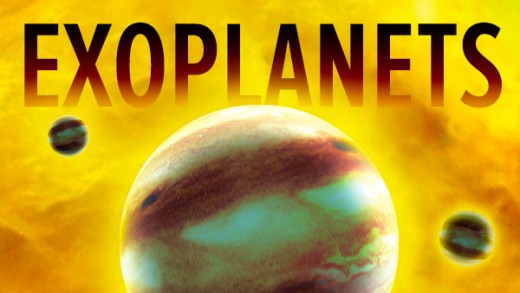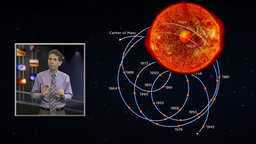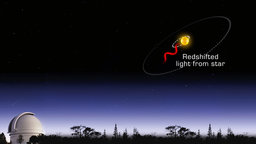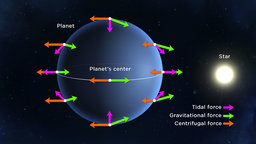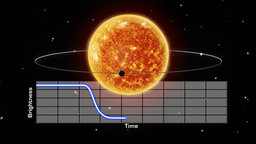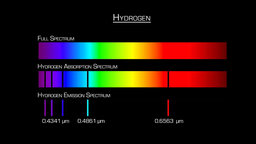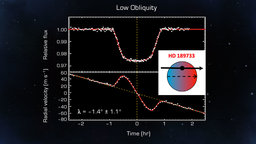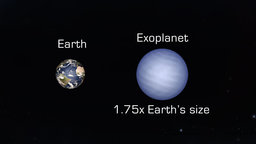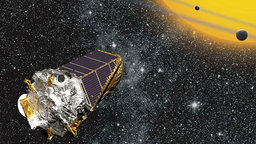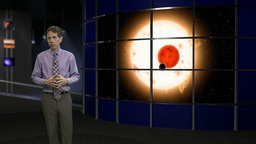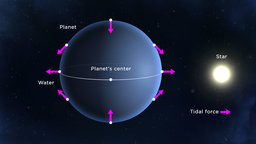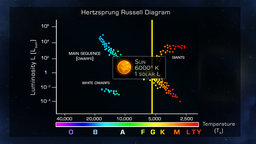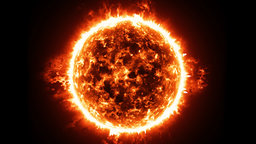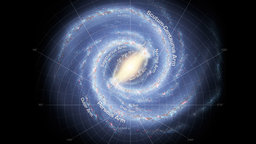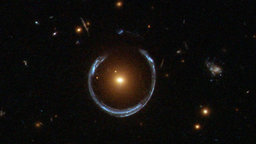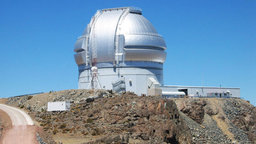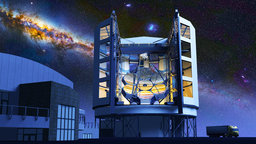Search for Exoplanets
As I mentioned on the main The Great Courses page, I haven't watched this show yet, but look forward to it. For now, here is the episode guide
The Search for Exoplanets: What Astronomers Know
This is the general description of the course/series.
Half a century ago, television viewers thrilled to the exploits of the original Star Trek series with its mission “to explore strange new worlds.” Today, astronomers are doing exactly that, analyzing the data from advanced telescopes and discovering strange worlds orbiting other stars in our galaxy.
Episode 1 Why Study Exoplanets?
I really liked Episode 1 as it starts to describe Stonehenge and importance of tracking the motions of the sun to its northern and southern extremes at the solstices for tracking the seasons, and thus why building alignments to determine this were important.
Learn about the exciting mission of exoplanetary science--the study of planets orbiting stars beyond the Sun. Review the eight planets in our solar system, which provide a baseline for understanding…
Episode 2 How to Find an Exoplanet
I really liked Episode 1 as it starts to describe Stonehenge and importance of tracking the motions of the sun to its northern and southern extremes at the solstices for tracking the seasons, and thus why building alignments to determine this were important.
Given the extreme faintness of a planet relative to the star it orbits, how can astronomers possibly find it? Learn about direct and indirect methods of detection. As an example…
Episode 3 Doppler and Transit Planet-Finding Methods
I really liked Episode 1 as it starts to describe Stonehenge and importance of tracking the motions of the sun to its northern and southern extremes at the solstices for tracking the seasons, and thus why building alignments to determine this were important.
Explore two other indirect approaches for finding exoplanets: first, by measuring the Doppler shift in the color of a star due to the pull of an unseen orbiting planet; and…
Episode 4 Pioneers of Planet Searching
I really liked Episode 1 as it starts to describe Stonehenge and importance of tracking the motions of the sun to its northern and southern extremes at the solstices for tracking the seasons, and thus why building alignments to determine this were important.
Chart the history of exoplanet hunting--from a famous false signal in the 1960s, through ambiguous discoveries in the 1980s, to the big breakthrough in the 1990s, when dozens of exoplanets…
Episode 5 The Misplaced Giant Planets
I really liked Episode 1 as it starts to describe Stonehenge and importance of tracking the motions of the sun to its northern and southern extremes at the solstices for tracking the seasons, and thus why building alignments to determine this were important.
Investigate 51 Pegasi b, the first planet detected around a Sun-like star, which shocked astronomers by being roughly the size of Jupiter but in an orbit much closer to its…
Episode 6 Explaining the Misplaced Giant Planets
I really liked Episode 1 as it starts to describe Stonehenge and importance of tracking the motions of the sun to its northern and southern extremes at the solstices for tracking the seasons, and thus why building alignments to determine this were important.
The standard theory of planet formation is based on our solar system. But does this view require revision based on the existence of misplaced giant planets--hot Jupiters circling close to…
Episode 7 The Transits of Exoplanets
I really liked Episode 1 as it starts to describe Stonehenge and importance of tracking the motions of the sun to its northern and southern extremes at the solstices for tracking the seasons, and thus why building alignments to determine this were important.
A tiny percentage of exoplanets can be detected transiting--or passing in front of--their host stars. Combined with Doppler shifts, transits provide information about a planet's size, mass, density, and likely…
Episode 8 Sniffing Planetary Atmospheres
I really liked Episode 1 as it starts to describe Stonehenge and importance of tracking the motions of the sun to its northern and southern extremes at the solstices for tracking the seasons, and thus why building alignments to determine this were important.
Survey the history of spectroscopy to understand how a telescope and a diffraction grating can disclose the composition of a star and its planet. Then learn how transits and occultations…
Episode 9 Stellar Rotation and Planetary Revolution
I really liked Episode 1 as it starts to describe Stonehenge and importance of tracking the motions of the sun to its northern and southern extremes at the solstices for tracking the seasons, and thus why building alignments to determine this were important.
Trace Professor Winn's own search for the subtle signs that tell whether a star has a tilted axis. Discover why this is an important clue in the mystery of misplaced…
Episode 10 Super-Earths or Mini-Neptunes?
I really liked Episode 1 as it starts to describe Stonehenge and importance of tracking the motions of the sun to its northern and southern extremes at the solstices for tracking the seasons, and thus why building alignments to determine this were important.
Learn how a sensitive new instrument led the way in finding planets smaller than the Jupiter-sized giants that dominated the earliest exoplanetary discoveries. Halfway in size between Earth and Neptune,…
Episode 11 Transiting Planets and the Kepler Mission
I really liked Episode 1 as it starts to describe Stonehenge and importance of tracking the motions of the sun to its northern and southern extremes at the solstices for tracking the seasons, and thus why building alignments to determine this were important.
The planet search took a giant leap forward in 2009 with the launch of the Kepler spacecraft, which used the transit technique to observe nearly 200,000 stars over a four-year…
Episode 12 Compact Multiplanet Systems
I really liked Episode 1 as it starts to describe Stonehenge and importance of tracking the motions of the sun to its northern and southern extremes at the solstices for tracking the seasons, and thus why building alignments to determine this were important.
Dig deeper into the treasure trove of data from the Kepler mission, which discovered hundreds of compact multiplanet systems, with planets much more closely packed than in our solar system.…
Episode 13 Planets Circling Two Stars
I really liked Episode 1 as it starts to describe Stonehenge and importance of tracking the motions of the sun to its northern and southern extremes at the solstices for tracking the seasons, and thus why building alignments to determine this were important.
See how data from the Kepler spacecraft confirms a scenario straight out of the movie Star Wars: a planet with two suns. Investigate the tricky orbital mechanics of these systems.…
Episode 14 Lava Worlds
I really liked Episode 1 as it starts to describe Stonehenge and importance of tracking the motions of the sun to its northern and southern extremes at the solstices for tracking the seasons, and thus why building alignments to determine this were important.
Explore the theoretical limit of the smallest possible orbit for a planet, taking into consideration tidal stresses and other destructive processes. Then focus on Professor Winn's search for such objects,…
Episode 15 Earthlike Planets
I really liked Episode 1 as it starts to describe Stonehenge and importance of tracking the motions of the sun to its northern and southern extremes at the solstices for tracking the seasons, and thus why building alignments to determine this were important.
Begin your search for planets that may harbor life by studying the conditions that make Earth habitable, including its distance from the Sun, surface temperature, atmosphere, and oceans. Then examine…
I really liked Episode 1 as it starts to describe Stonehenge and importance of tracking the motions of the sun to its northern and southern extremes at the solstices for tracking the seasons, and thus why building alignments to determine this were important.
Why were the motions of the Sun, Moon, and stars so important to ancient people? Investigate key astronomical directions noticed by all cultures. Then embark on your study of Stonehenge,…
Episode 17 Breakthroughs of Early Greek Astronomy
I really liked Episode 1 as it starts to describe Stonehenge and importance of tracking the motions of the sun to its northern and southern extremes at the solstices for tracking the seasons, and thus why building alignments to determine this were important.
Why were the motions of the Sun, Moon, and stars so important to ancient people? Investigate key astronomical directions noticed by all cultures. Then embark on your study of Stonehenge,…
Episode 18 The Genius of Hipparchus
I really liked Episode 1 as it starts to describe Stonehenge and importance of tracking the motions of the sun to its northern and southern extremes at the solstices for tracking the seasons, and thus why building alignments to determine this were important.
Why were the motions of the Sun, Moon, and stars so important to ancient people? Investigate key astronomical directions noticed by all cultures. Then embark on your study of Stonehenge,…
Episode 19 Revealing the Antikythera Mechanism
I really liked Episode 1 as it starts to describe Stonehenge and importance of tracking the motions of the sun to its northern and southern extremes at the solstices for tracking the seasons, and thus why building alignments to determine this were important.
Why were the motions of the Sun, Moon, and stars so important to ancient people? Investigate key astronomical directions noticed by all cultures. Then embark on your study of Stonehenge,…
Episode 20 How the Antikythera Mechanism Worked
I really liked Episode 1 as it starts to describe Stonehenge and importance of tracking the motions of the sun to its northern and southern extremes at the solstices for tracking the seasons, and thus why building alignments to determine this were important.
Why were the motions of the Sun, Moon, and stars so important to ancient people? Investigate key astronomical directions noticed by all cultures. Then embark on your study of Stonehenge,…
Episode 21 Achievements and Legacy of Ptolemy
I really liked Episode 1 as it starts to describe Stonehenge and importance of tracking the motions of the sun to its northern and southern extremes at the solstices for tracking the seasons, and thus why building alignments to determine this were important.
Why were the motions of the Sun, Moon, and stars so important to ancient people? Investigate key astronomical directions noticed by all cultures. Then embark on your study of Stonehenge,…
Episode 22 Star Catalogs from around the World
I really liked Episode 1 as it starts to describe Stonehenge and importance of tracking the motions of the sun to its northern and southern extremes at the solstices for tracking the seasons, and thus why building alignments to determine this were important.
Why were the motions of the Sun, Moon, and stars so important to ancient people? Investigate key astronomical directions noticed by all cultures. Then embark on your study of Stonehenge,…
Episode 23 How Ancient Astronomy Ended
I really liked Episode 1 as it starts to describe Stonehenge and importance of tracking the motions of the sun to its northern and southern extremes at the solstices for tracking the seasons, and thus why building alignments to determine this were important.
Why were the motions of the Sun, Moon, and stars so important to ancient people? Investigate key astronomical directions noticed by all cultures. Then embark on your study of Stonehenge,…
Episode 24 Ancient Astronomy and Modern Astrophysics
I really liked Episode 1 as it starts to describe Stonehenge and importance of tracking the motions of the sun to its northern and southern extremes at the solstices for tracking the seasons, and thus why building alignments to determine this were important.
Why were the motions of the Sun, Moon, and stars so important to ancient people? Investigate key astronomical directions noticed by all cultures. Then embark on your study of Stonehenge,…
